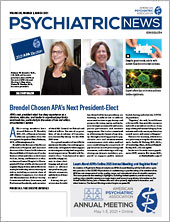People with autism spectrum disorder (ASD) have more than three times the rate of suicide and suicide attempts than people without ASD, a study in JAMA Network Open has found. Furthermore, the vast majority of those with ASD who attempt or die by suicide have comorbid psychiatric conditions.
Kairi Kõlves, Ph.D., a co-director of the WHO Collaborating Centre for Research and Training in Suicide Prevention at Griffith University in Mount Gravatt, Queensland, Australia, and colleagues analyzed data collected by the Danish Civil Registration System between January 1995 and December 2016 from more than 6.5 million people in Denmark aged 10 years or older. Among those individuals, 35,020 had received a diagnosis of ASD. There were 64,109 suicide attempts among all registered individuals, 587 of them by people with ASD, and there were 14,197 suicides, 53 of them by people with ASD.
The researchers found that people with ASD had 3.19 times the rate of suicide attempts and 3.75 times the rate of suicide of those without ASD. Compared with people who did not have any psychiatric disorders, people diagnosed with only ASD had 1.33 times the rate of suicide attempts, and people who had comorbid psychiatric disorders in addition to ASD had 9.27 times the rate of suicide attempts.
“Some potential reasons [for this heightened risk] may include the different social needs and skills of people with ASD, which … may lead people with ASD into further isolation and leave them without required care,” Kõlves told Psychiatric News. “However, this should be further studied using qualitative research methods.”
More than 90% of people with ASD who attempted suicide or died by suicide had at least one other psychiatric condition. The most common comorbid psychiatric conditions among those with ASD who attempted suicide or died by suicide were anxiety disorders and affective disorders.
These findings struck Eric Hollander, M.D., director of the Autism and Obsessive Compulsive Spectrum Program at Albert Einstein College of Medicine and Montefiore Medical Center in New York. He is also a professor of psychiatry at Albert Einstein College of Medicine.
“The most important finding in this study is that comorbidities are driving these negative outcomes. As individuals with ASD age, a lot of the symptoms of comorbid conditions can become more apparent,” said Hollander, who was not involved in the research. “However, there is not enough expertise among people who work with individuals with ASD in identifying comorbidities in this population and treating them.”
Hollander explained that health professionals who focus on ASD tend to work with children, most of whom have yet to develop comorbidities, whereas health professionals who work with adults with ASD, such as neurologists, are less likely to identify mood disorders. He added that mental health professionals who focus on psychiatric disorders do not always have a strong understanding of how ASD presents across the lifespan.
“This research is important because it shows what the long-term trajectory may be for individuals with ASD and how their challenges may change as they age,” Hollander said. The study revealed that females with ASD had 4.41 times the rate of suicide attempts compared with males with the disorder.
“In general, a higher risk of a suicide attempt in females is not unusual. However, the magnitude of the difference [among people with ASD] is rather surprising,” Kõlves said. She noted that girls and young women with ASD are often diagnosed later in life than their male peers, partly because they may mask their symptoms by behaving in socially expected ways, so their difficulties establishing and retaining social and intimate relationships remain unaddressed for longer periods of time. This in turn may explain the higher rates of suicidal behavior among girls and women, although further research is necessary, Kõlves added.
The study also found that higher education, marriage, or having a partner did not appear to offer people with ASD any protection from risk the way they offer protection to those without ASD.
“A higher educational level may contribute to a greater awareness of their differences [from others], which may result in alienation from family and society at large and bring further social anxiety and isolation,” said Kõlves. She added that a higher level of cognitive functioning may afford a greater understanding of methods of suicide and how to obtain the means to carry it out.
Hollander noted the interplay between people with ASD and their environment.
“The people who are higher functioning are more likely to be in the mainstream world and face the academic or job-related stresses of the mainstream world, but they are less likely to be able to advocate for themselves and access the resources they need,” he said. ■
This study was supported by the Danish Health Foundation and by the Griffith University Research Fellowship. “Assessment of Suicidal Behaviors Among Individuals With Autism Spectrum Disorder in Denmark” is posted
here.

